The New Forest. It's a name that conjures images of gnarled oaks draped in moss, sun-dappled glades teeming with deer, and a sense of ancient magic that clings to the very air. This sprawling expanse of woodland in Hampshire, once the hunting preserve of kings, holds within its embrace centuries of history, folklore, and a touch of the uncanny. From the tragic deaths of royalty to fire-breathing dragons, from hidden covens to strange modern occurrences, the New Forest is a rich tapestry woven with threads of the real and the unreal.
Royal Blood and a Curse Forged in Fire:
Our exploration begins with a king's violent end. William Rufus, the red-haired son of William the Conqueror, met his fate in the New Forest in the year 1100. While the official record points to a hunting accident, the whispers of the time, and those that echo through the ages, suggest a darker narrative. Was it truly a stray arrow, or was it a carefully orchestrated assassination? The ambiguity surrounding his death has fueled centuries of speculation.
But the story takes a more mystical turn. Legend speaks of a blacksmith, his name lost to time, whose land was unjustly seized by William the Conqueror. Consumed by a burning rage, the blacksmith is said to have laid a curse upon the king, a malediction that foretold the violent deaths of William's sons. This curse, some believe, explains the tragic demise of William Rufus, struck down in the very forest that was once the blacksmith's own.
Frank Turner, in his haunting ballad "An English Curse," captures the essence of this legend:
"With John's curse it called out and Lord Tyrrell fired low, his arrow struck Rufus with a sickening blow, and he fell from his horse to the ground below, and the land took him for its own."1
In our interview for the Wyrd Wessex podcast, Turner delved deeper into the significance of such folklore: "The value in that isn't the direct surface level content of what they say, it's what they say about the people who tell the stories."He emphasised the importance of folklore in understanding the perspectives and grievances of ordinary people, offering a glimpse into the past that official histories often overlook. "It's a story about resisting authority," Turner explained, "It's a story about sticking it to the man and telling the powers that be to go fuck themselves."
Ghosts, Hounds, and a Pond of Blood:
The New Forest's spectral inhabitants add another layer of intrigue. William Rufus's ghost, it's said, is condemned to eternally wander the paths he once roamed, a restless spirit trapped between worlds. Some claim to have witnessed his phantom funeral procession, a chilling reminder of his violent end. Ocknell Pond, where Sir Walter Tyrrell, the man who allegedly fired the fatal arrow, attempted to cleanse himself of the king's blood, is said to turn a disturbing crimson hue each year on the anniversary of Rufus's death. And then there's the terrifying Tyrrell's Hound, a spectral black dog, much like the infamous Black Shuck, whose appearance is a foreboding omen of death. These ghostly tales weave a tapestry of unease and mystery, blurring the lines between recorded history and chilling folklore.
The Dragon of Bisterne: A Tale of Milk, Mayhem, and a Hero's Demise:
But the New Forest's legends aren't confined to human figures. Mythical creatures, too, have their place in the forest's rich folklore. The tale of the Dragon of Bisterne is a classic dragon-slaying story with a distinctly local flavor. This fearsome beast terrorized the town, initially demanding a daily tribute of milk before its appetite grew to include cows and, eventually, the villagers themselves. Hope arrived in the form of Sir Maurice de Berkeley, a brave knight who repeatedly battled the dragon, each encounter leaving the beast wounded but not defeated.
Sir Maurice finally devised a clever strategy. Some versions of the story say he had a blacksmith weld sharp points to his armor, others that he covered himself in broken glass. Either way, his armor became a weapon. During their final confrontation, Sir Maurice allowed the dragon to coil around him, the beast's own embrace becoming its undoing. With the help of Sir Maurice's loyal hunting dogs, Grim and Holdfast, the dragon was finally slain. But victory came at a price. Both Grim and Holdfast perished, and Sir Maurice, though triumphant, was mortally wounded. He distributed the dragon's hoard amongst the people, rebuilt Bisterne Manor, and then, drawn back to the site of his victory, breathed his last on the very hill where the dragon fell. The hill, it is said, still rumbles with the echoes of the dragon's dying breaths.
Operation Cone of Power: Witchcraft in the 20th Century:
The New Forest's strange history doesn't end with knights and dragons. In the midst of World War II, as Britain faced the threat of a Nazi invasion, Gerald Gardner and the New Forest Coven took matters into their own hands. In 1940, they performed a ritual known as "Operation Cone of Power," a desperate attempt to magically influence Hitler and prevent him from crossing the English Channel. Under the cover of wartime darkness, the coven, it is said, met naked, using a shattered lantern as a focus for their power. Chanting "You cannot cross the sea, you cannot cross the sea, you cannot come, you cannot come," they directed their combined will towards the mind of Adolf Hitler. While the true impact of this ritual remains a mystery, it serves as a fascinating example of the enduring belief in magic, even in the face of modern warfare.
A Tapestry of the Strange and Wonderful:
The New Forest continues to inspire and intrigue. Witch's marks, including chilling curse inscriptions, have been discovered carved into the walls of old cottages, offering a tangible link to past beliefs and practices. These marks, often intended to ward off evil, remind us of the enduring power of superstition and the human desire to control the unseen forces that shape our lives. As Frank Turner reflected, "I think that the value in things like folklore and mythology…isn’t the direct surface level content…but what they say about the people who tell the stories."
The New Forest is a place where fact and fiction intertwine, where history and folklore dance in the shadows of ancient trees. It's a place that invites exploration, ignites the imagination, and reminds us that the whispers of the past can be just as captivating as the stories we create today. And as we found in our visit to the forest, the forest still holds many secrets, waiting to be uncovered. Perhaps, in time, we'll return to delve even deeper into the mysteries that lie hidden within its ancient heart.
Stay Wyrd!
Visit our website on Substack and sign up for excessive access to bonus episodes and show extensions, or just read our blog www.wyrdwessex.co.uk
Buy our merch here
Written and hosted by Craig Brooks and Andy Stevens
Edited by Craig Brooks
Intro music by Leonell Cassio - The Paranormal Is Real (ft. Carrie)
Watch the full episode and interview here

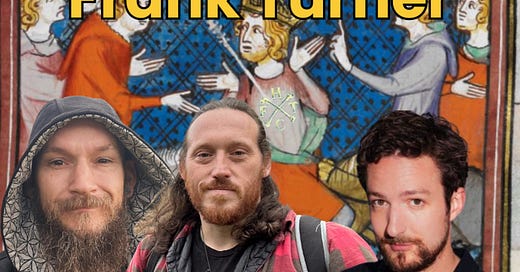

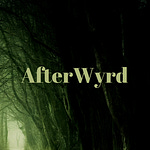
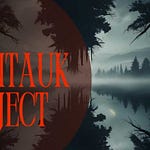

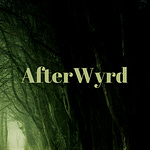


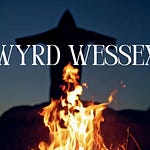

Share this post